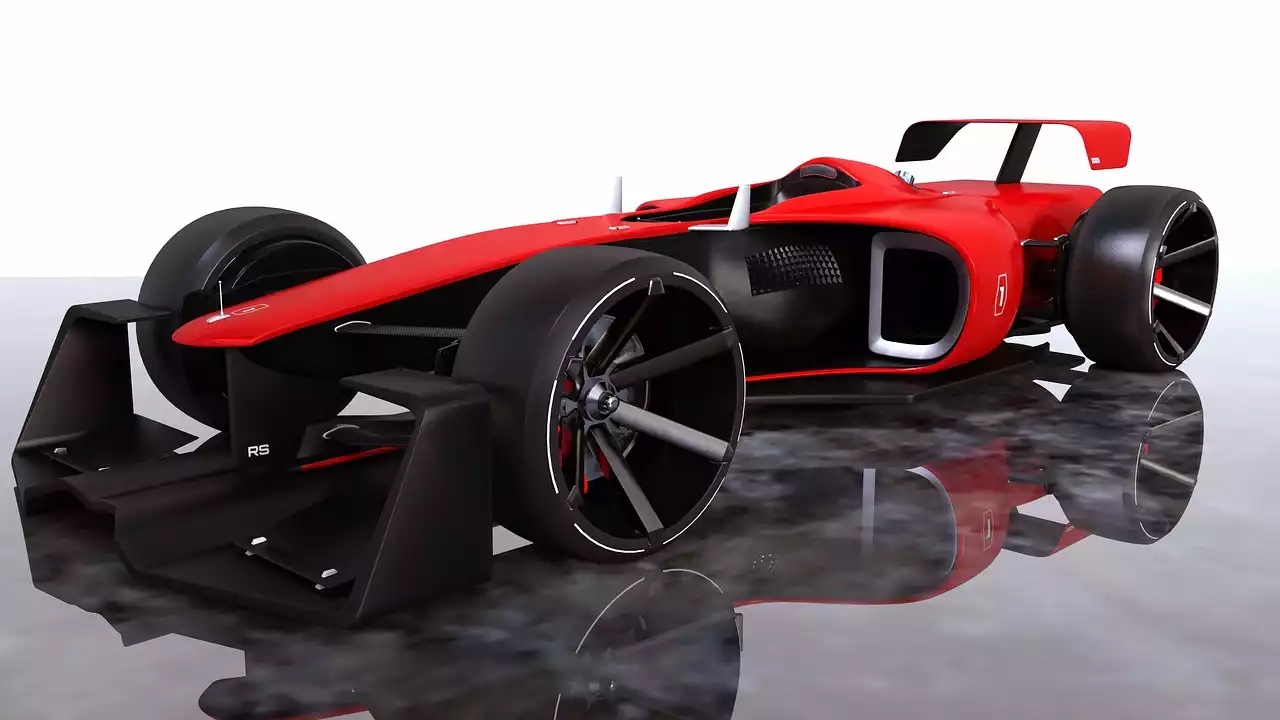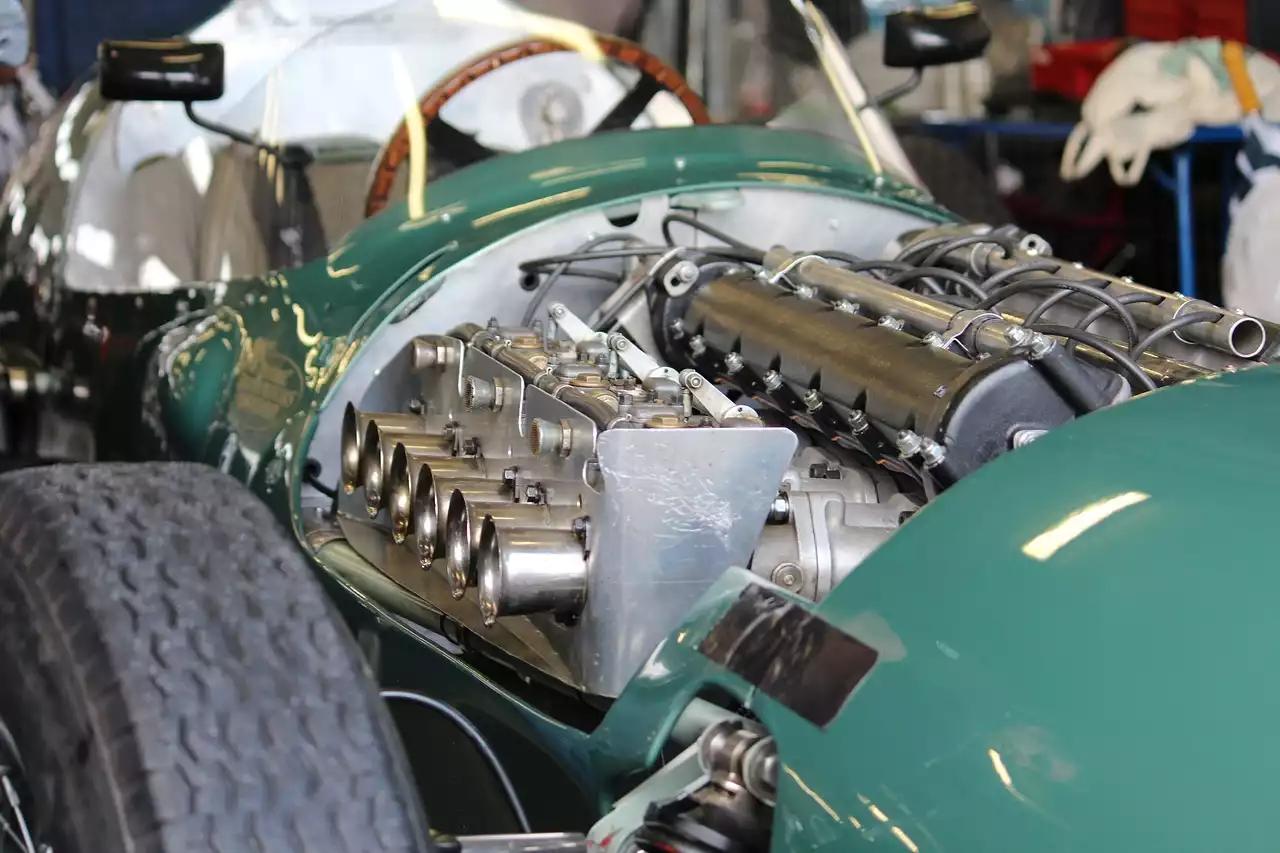F1 technology and its influence on car design and engineering
Formula One is known for its technology prowess, and the sport has a significant influence on the automotive industry. F1 technology has led to advancements in car design and engineering, making modern cars more efficient, faster, and safer. The aerodynamics of a Formula One car, for example, have been refined over the years, leading to a better understanding of how air flows around a car. This knowledge has been applied to modern cars, resulting in better fuel efficiency and improved handling.
F1 technology has also influenced the design of engines in road cars. For example, the use of turbochargers in F1 led to their use in road cars, resulting in more powerful and fuel-efficient engines. The development of lightweight materials such as carbon fiber and titanium used in F1 cars has also trickled down to road cars, making them lighter and more agile.
Moreover, F1 has also driven innovation in areas such as suspension systems, brakes, and tires. Suspension systems in modern cars are now more advanced, allowing for better handling and ride comfort. Braking systems have also improved, with carbon-ceramic brakes used in high-performance cars, offering better stopping power and endurance. F1 has also driven innovation in tire design, resulting in better grip, longer life, and better fuel efficiency.
F1 and the development of hybrid engines
F1 has played a significant role in the development of hybrid engines. The sport's governing body, the FIA, introduced hybrid power units in 2014, requiring teams to use a combination of a V6 turbo engine and an energy recovery system (ERS). The ERS consists of two motor-generator units, which recover energy from braking and store it in batteries.
The introduction of hybrid engines in F1 has led to the development of hybrid engines in road cars. Hybrid engines are now used in many cars, offering better fuel efficiency and lower emissions. The technology used in F1 has also led to advancements in battery technology, resulting in more efficient and longer-lasting batteries used in electric and hybrid cars.
Moreover, F1 has also driven innovation in energy management systems, resulting in better control over energy consumption and usage. Energy management systems are now used in road cars, allowing drivers to monitor and control their energy consumption, resulting in better fuel efficiency and longer battery life.
Aerodynamics and F1: How it has revolutionized car design
Aerodynamics is one of the most critical areas of F1 technology, and the sport has revolutionized car design and engineering through advancements in aerodynamics. F1 cars are designed to be as aerodynamic as possible, allowing them to travel through the air with minimal resistance. The aerodynamics of a Formula One car have been refined over the years, leading to a better understanding of how air flows around a car.
The knowledge gained from F1 aerodynamics has been applied to modern cars, resulting in better fuel efficiency and improved handling. Modern cars are now designed to be more aerodynamic, reducing drag and improving fuel efficiency. Moreover, the development of active aerodynamics, such as adjustable wings and flaps, has also trickled down to road cars, resulting in better handling and stability.
F1 has also driven innovation in wind tunnel technology, resulting in better accuracy and reliability in aerodynamic testing. Wind tunnel technology is now used in the automotive industry, allowing for more precise testing and development of aerodynamic features.
The role of data analytics in F1 and its impact on the automotive industry
Data analytics plays a crucial role in F1, allowing teams to analyze vast amounts of data to gain insights into their performance. The use of data analytics in F1 has resulted in better performance and more efficient use of resources. The data collected during a race, such as lap times, tire wear, and fuel consumption, is analyzed to gain insights that can be used to improve performance.
The use of data analytics in F1 has also impacted the automotive industry. The knowledge gained from data analytics in F1 has led to advancements in areas such as engine design, aerodynamics, and energy management systems. The use of data analytics has also led to advancements in driver assistance systems, resulting in better safety features in modern cars.
F1 and safety innovations in the automotive industry
Safety has always been a top priority in F1, and the sport has a significant influence on the safety features in modern cars. F1 has driven innovation in areas such as safety cages, seat belts, and impact-absorbing materials. The use of carbon fiber in F1 cars has also led to advancements in car safety, resulting in lightweight and strong safety features in modern cars.
Moreover, the use of data analytics in F1 has also led to advancements in driver assistance systems, resulting in better safety features in modern cars. The development of active safety systems, such as automatic emergency braking and lane departure warning, has also been influenced by F1 technology.
The future of F1 and its impact on the automotive industry
The future of F1 looks bright, with the sport continuing to drive innovation in the automotive industry. The introduction of new technologies, such as electric and hydrogen-powered engines, is set to revolutionize the sport and the automotive industry. The use of artificial intelligence and machine learning in F1 is also set to impact the automotive industry, resulting in more advanced driver assistance systems and autonomous driving technology.
Moreover, the sport's focus on sustainability and reducing its environmental impact is also set to impact the automotive industry. The development of more sustainable and eco-friendly technologies in F1 is set to trickle down to road cars, resulting in more efficient and sustainable cars.
Case studies: Examples of F1 technology in road cars
F1 technology has had a significant impact on road cars, with many features found in modern cars being influenced by F1 technology. Here are some examples of F1 technology in road cars:
- The use of carbon fiber in F1 cars has led to advancements in lightweight materials used in road cars, resulting in better fuel efficiency and improved handling.
- The development of hybrid engines in F1 has led to the use of hybrid engines in road cars, resulting in more fuel-efficient and eco-friendly cars.
- The use of wind tunnel technology in F1 has resulted in better aerodynamics in road cars, reducing drag and improving fuel efficiency.
- The development of energy management systems in F1 has led to the use of energy management systems in road cars, resulting in better fuel efficiency and longer battery life.







.png?size=50)



